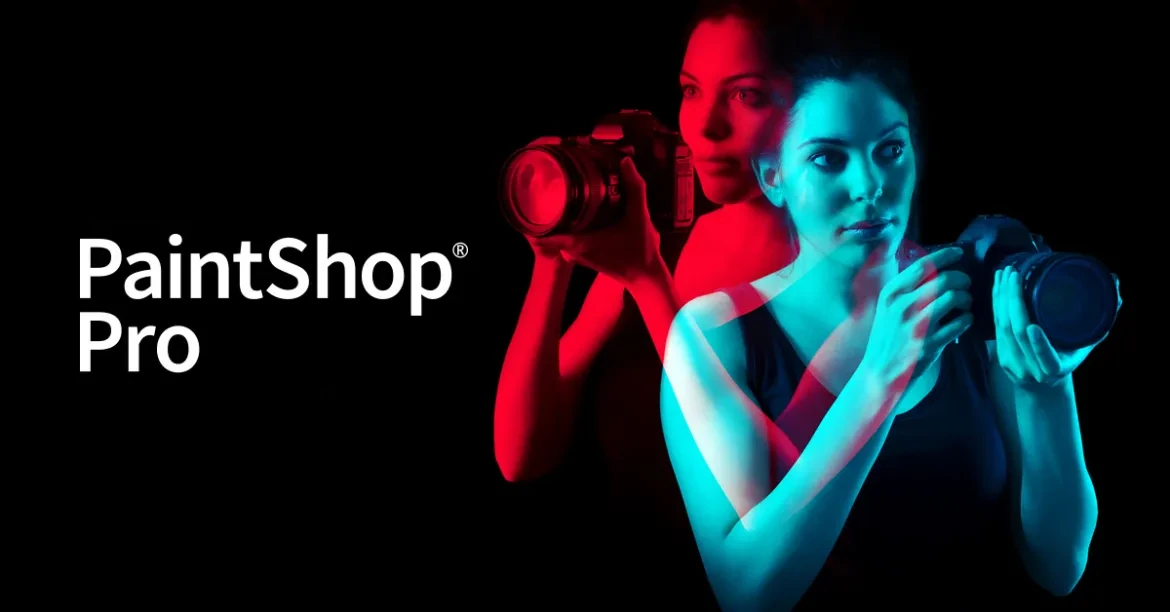What is PaintShop Pro?
PaintShop Pro is an advanced image editor developed by Corel. It has support for both raster and vector graphics. PaintShop Pro provides plenty of tools to its users, ranging from simple ones such as color correction and noise removal, to more sophisticated ones such as scripting and batch image processing, to cutting-edge advanced technologies like AI-powered content-aware editing.
PaintShop can work with RAW files from hundreds of different camera models, create HDR images by combining several pictures, automatically adjust and correct certain image issues, and much more. It is a very capable editor with a long history – the first version was released in 1990. Over all these years, the developers had time to not only add all these features, but also to refine them to work near-perfectly, with the precision of a true professional tool.
There is, however, a flaw in this program. To this day, PaintShop has never been available on anything other than Windows. And while the developers likely feel that porting PaintShop to other platforms would not be worth it, that doesn’t change the fact that there are people who want to run PaintShop Pro on Mac. Thankfully, there are a few ways to do so – learn about them in the guide below.
Why PaintShop Pro doesn’t run on Mac?
There are several reasons why some apps don’t run on Mac. It could be an incompatibility with Mac or macOS version. Also, MacOS Catalina and Big Sur don’t support 32-bit apps. Most developers are designing new, 64-bit versions of the apps, but, in spite of that, there are still hundreds of apps that can only run on 32-bit Macs. In our case, the reason is that PaintShop Pro native Macintosh version simply doesn’t exist. At the present moment, there is no information about the release date and the possibility that PaintShop Pro will be available for Mac.
How to run PaintShop Pro on Mac
The most popular solution for running PaintShop Pro on Mac/MacBook is virtualization software. Despite the fact that emulators usually demand quite a lot of computing power out of a Mac, some of them, for example, Parallels, VirtualBox, or VMWare, can help to run different programs on OS X with minimal losses in the performance of your machine. Moreover, some of them are compatible with DirectX 11, which can help with running graphically demanding apps and games. Also, you can change desktops and copy any files between your Parallels program (Windows Desktop) and OS X freely.
Running PaintShop Pro through Parallels

If you wish to run PaintShop Pro on Mac, Parallels Desktop can be a solution. This is an application that allows for Windows virtualization on Mac with the full support of DirectX and GPUs. In simpler terms, what this means is that it allows you to install Windows 10 on Mac with just a couple of clicks and switch between MacOS and Windows instantly. So you will be able to run Windows and install PaintShop Pro just like on a regular PC.
Running PaintShop Pro though other virtual machines
Another popular virtualization program is VMware Fusion. It is a software hypervisor that allows running virtual machines like guest operating systems, such as Windows, Linux, FreeBSD, and Solaris. Fusion’s current versions provide hardware-accelerated DirectX 11 and OpenGL 4.1 capabilities to virtual machines, which allows them to run heavy, GPU-intensive applications and games with top 3D graphics.
You can also try VirtualBox, Wine, and QEMU, however, the latter two are not very accessible to users and require advanced computer skills to use.
Running PaintShop Pro on remote server
If you have a powerful Windows-based server and a fast internet connection, another method is PaintShop Pro running on Windows on a Server machine (in the cloud, or remote desktop) and looking at the screen from your Mac.
You can use TeamViewer, AnyDesk, or other software for this purpose.
Running PaintShop Pro on Windows 10 using Boot Camp
BootCamp allows users to choose the system to work in on startup, however, you won’t be able to switch between systems like in Parallels. Do note that you will need no less than 64 GB of free space on your device (we recommend having 128 GB). After Windows installation completes, your Mac starts up in Windows and opens a “Welcome to the Boot Camp installer” Window. You will need to reboot your machine every time you want to switch from Mac to Windows and vice versa. To set up Windows via BootCamp, please, do the following:
For OS X El Capitan 10.11 or later
Important: for MacOS versions prior to OS X El Capitan 10.11 you will need to create bootable Windows USB.
- Download Windows ISO file
- Open Boot Camp Assistant (Go to Applications > Utilities)
- Define the Windows partition size, choose downloaded Windows ISO file
- Format Windows partition and go through all Windows installation steps
- When Windows boots for the first time, follow on-screen instructions to install Boot Camp and Windows support software (drivers)
Note: Mac M1 chipsets are not supported by BootCamp
Software Alternatives
If you did not succeed using methods above, feel that it is too difficult, or wish to run native software instead of PaintShop Pro, there are alternatives that support MacOS and offer the same or similar features. Among the best ones are Adobe PhotoShop, Adobe Lightroom, Pixelmator, Affinity Photo, and Polarr.






